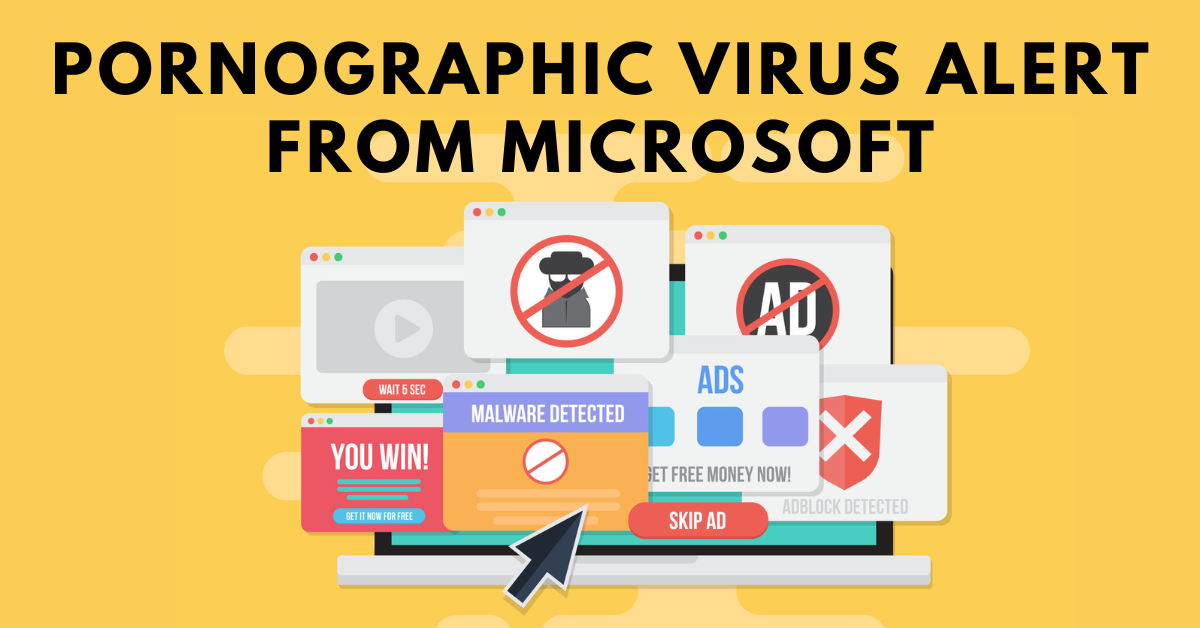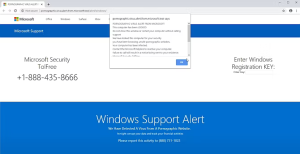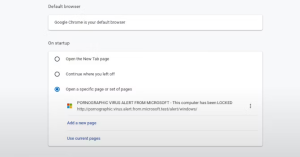
Malware is never a good thing to get. Your computer is acting weird, you’re worried about losing data, and getting rid of the virus can take time and cost money. Users say that recently, there have been a lot more pop-up alerts that say they are from Microsoft and warn them that there is dangerous pornographic content on their computer.
So, what’s the tip about the pornographic virus? Is it a dangerous type of virus or just an annoying scam? Here’s how to get rid of the pornographic virus alert from Microsoft for good.
What Does the Microsoft Pornographic Virus Alert Mean?
We have talked about the warning from Apple about a pornographic bug. The pornographic virus alert from Microsoft is a low-level tech support trick that comes from a possibly unwanted program, or PUP. So, what is a scam involving tech support?
A tech support scam is a way to get money from computer users who don’t know what’s going on. The crooks install a possibly unwelcome program on your computer, normally as part of a freebie download. This is done so that the developer can make a few extra dollars at your cost.

Once the PUP is loaded, it forces the fake error message onto your screen. In this case, it also takes over the way your browser works. The error message tells you that “We have locked this computer for your safety” and “You have been looking at unsafe pornographic websites.”
The mistake message always ends with a phone number you can use to contact the Microsoft security team. But, you got it, when you call the number, you don’t get a Microsoft security team, you get crooks. In the last part of the tech support scam, the “Microsoft” person will tell you to pay for a special security tool that gets rid of the PUP, puts your browser back to normal, and deletes your information on the pornographic websites.
Of course, this is a total lie, and they only want your money.
Under no circumstances should you call the number that shows up with the pornographic virus alert from Microsoft. It is risky and could make the situation much worse.
Know More: Recommended Google Maps Marketing Companies
How to Get Rid of the Pornographic Virus Alert From Microsoft
Even though a pornographic virus alert from Microsoft is annoying, it is easy to get rid of and doesn’t do much damage (as long as you don’t call the number in the alert message!).
Most PUPs get into your system when you install another program, so you can get rid of the alert by uninstalling the suspect program. Once the program has been removed, you can scan your system with security and antimalware software to find any leftover files.
1. Clean your computer of the PUP
The fake Microsoft alert tries to lock your browser into full-screen mode so you can’t switch to any useful apps.
To open the Task Manager, press CTRL + SHIFT + ESC. Find the process for your browser, such as Chrome, Firefox, Edge, and so on. By right-clicking and choosing “End Task,” you can close the browser and get rid of the fake virus warning.
Now, go to Control Panel > Programs and Features. Choose the Installed On tab to put the list of programs in order of when they were installed. Now, you should get rid of any strange programs that you recently added to your computer. Think about the last program you put on your computer. What happened? During activation, did you forget to uncheck any boxes?
No matter what, be sure to remove any new installs. Select the app you don’t want, right-click on it, and choose “Uninstall.”
2. Change the settings on your browser
The next thing you can do is reset your browser. The fake pornographic virus alert changes your browser’s starting page so that it always shows the warning.
Click the three dots in Google Chrome and then click Settings. Scroll down to the part called “On Startup,” then click “Open the New Tab Page” to get rid of the current choice. Now, scroll back up to the Reset and Clean Up area and click on Restore Settings to Their Original Defaults.

This will set your Chrome browser back to its original settings, which will get rid of the fake virus alert even more. All of the major computers have a similar way to restart them.
3. Use Malwarebytes to clean up your computer.
After you get rid of the PUP and restart your browser settings, you can start checking your system for any harmful files that might still be there. Malwarebytes is the best choice because it is free and will look for and get rid of anything bad.
Get Malwarebytes and put it on your computer. You don’t have to pay for the Premium Trial, so you can agree to it if you want to. It will just end when the time is up. Now, look for bad files on your machine by running a scan. When the scan is done, choose all of the files and put them in quarantine.
The last step to get rid of the pornographic virus alert from Microsoft is to get rid of all the PUPs and anything else Malwarebytes finds.
How to stop future programs that might be unwanted
Now that you’ve gotten rid of the PUP, restarted your browser, and cleaned up the rest of your system, you might want to think about making your security stronger so this doesn’t happen again.
Many shady free programs that offer what seems to be a harmless product also include useless freebies like PUPs. Some programs do this for less good reasons. Some programmers might not even know that their program can be downloaded from another site, but that it comes with some other harmful files.
You need to improve your security to protect yourself from PUPs and even worse malware. Many editors and writers at Prime Marketing News recommend using Malwarebytes Premium, which protects against a wide range of threats in real time. It does cost something, but the money is well worth it.
But if you don’t want to spend any money, you should look into the best free Windows internet security tools.
You can get rid of the warning about the Pornographic Virus Alert From Microsoft.
The pornographic virus alert from Microsoft is definitely annoying. But now that you know it’s a lure for a tech support scam, you can avoid falling for it and keep your money and data.
Malware is a constant risk in the internet world. If you get malware again, check out our full guide to removing malware.


